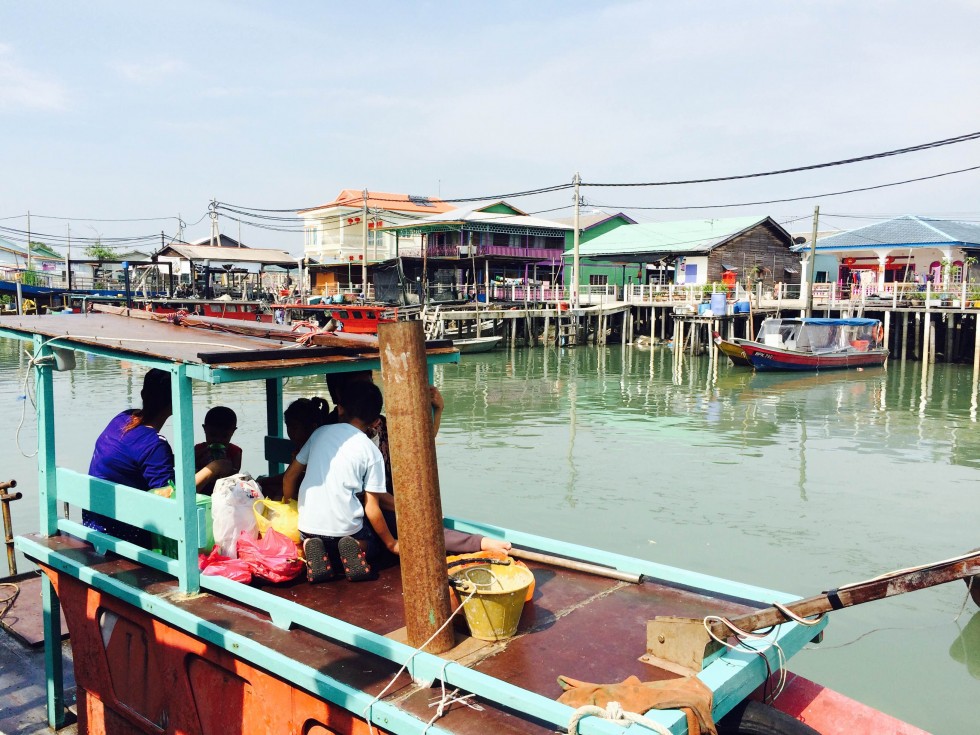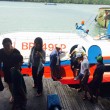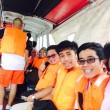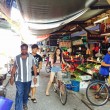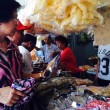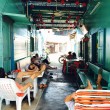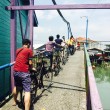By Izzud deen Redzuan
Pulau Ketam, literally translated as the œCrab Island. It is a small island located off the coast of Klang and inhabited mostly by Chinese clans of Toechew and Hokkien as well as a few Malays who are mainly public sector employees. Though, English is commonly understood.
Welcome by the ˜Floating houses gives a glimpse of excitement to the traveller as the house is above 1 to 10 metres from sea level and all houses are connected to one another.
The island is easily accessible from the Port Klang jetty by air-conditioned ferry and speedboat. The tickets can be purchased at the set up table at the entrance of jetty or in the ferry or speedboat itself, RM7 for ferry and RM10 for speedboat.
There are about 15 trips per day provided by the locals and each trip takes about 20 to 30 minutes to arrive at the isle. However, the ferry sometimes will stop at the smaller village to drop the locals before going to the main terminal. Make sure you get down at the correct place!
The main village is Kampung Pulau Ketam and the other smaller village is Kampung Sungai Lima. This island is also equipped with almost all basic facilities such as clinic, police station, fire station, post office, Maybank, hotel, schools, Islamic Community Hall and seafood shops.
Pulau Ketam is free from traffic jam and parking problem as the main transportation here is bicycle and electric motorcycle other than walking. Tourists usually rent a bicycle for a day at RM5 to explore the village on their own.
Mei Yong, a frequent tourist here said, œIts nice to come here when its not during public holidays. The path can be crowded and you will have to navigate your way through the crowds.
Spending about one hour or even a day will give you a lot of experiences especially by looking at the way of life of the villagers. By walking through the neighbours, you may notice the housewives manually peeling the prawns to be made into prawn paste and ˜udang kering, then fisherman repairing the damaged of fishing nets and workshop that repair engine boat-motors.
According to Amir, a local fishermen, being the minority here doesn’t stop him to seek rezeki for his family. With a lot of experiences here, Amir managed to get round RM5,000 within the two-week of catching fish. He further noted that his family and other Muslim friends will prepare a lunch box before going to work due to the Muslim restaurant owner also a fishermen. He probably open his stall when the sea don’t permit and rough waves.
However, there is a big challenge here especially for the Muslim visitors. Halal food is hardly found. There are only three stalls which are Nasi Lemak in front of Islamic Community Hall, then Indonesian Nasi Ayam Penyek and Bismillah signed-restaurant. But, they are opened at 3:00 in the evening everyday according to the police officer.
In principle, it is permissible for a Muslim to travel to a non-Muslim territory for the purpose of tourism but the Muslim who travels to any of those countries should be aware of his religious commitment such as he can perform his prayers in a safe environment and protect himself against temptations.
There are many verses in the Qur’an which call upon all Muslims to travel around the world to appreciate the greatness of Allah.  Allah Almighty had mentioned in the Qur’an: œSays (O Muhammad): Travel in the land and see how He originated creation, then Allah brings forth the later growth. Lo! Allah is able to do all things. (Al-Ankabut: 20).
Indeed, tourism has widened the Muslim’s knowledge and awareness about other society by learning other’s tradition and culture. We get to know more about other people and we can go on a trip to a non-Muslim country or anywhere else as long as we abide by the Islamic teachings and commit to the tenets of our faith (Islam).***
